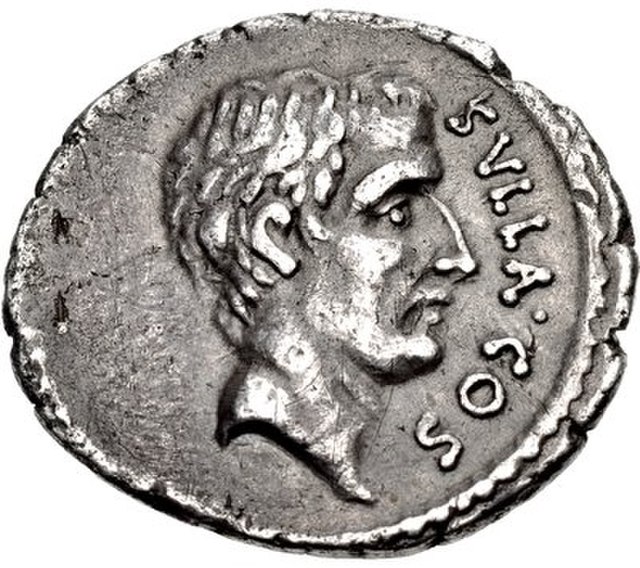Gaius Julius Caesar was a Roman general and statesman. A member of the First Triumvirate, Caesar led the Roman armies in the Gallic Wars before defeating his political rival Pompey in a civil war, and subsequently became dictator from 49 BC until his assassination in 44 BC. He played a critical role in the events that led to the demise of the Roman Republic and the rise of the Roman Empire.
The Tusculum portrait, possibly the only surviving sculpture of Caesar made during his lifetime
Gaius Marius, Caesar's uncle and the husband of Caesar's aunt Julia. He was an enemy of Sulla and took the city with Lucius Cornelius Cinna in 87 BC.
Sulla, depicted on a coin minted by Quintus Pompeius Rufus in 54 BC. Sulla took the city in 82 BC, purged his political enemies, and instituted new constitutional reforms.
Bust, from the imperial period, of a man – in this case Augustus – wearing the civic crown (Latin: corona civica). Caesar won the civic crown for his bravery at the Siege of Mytilene in 81 BC.
The Roman people was the body of Roman citizens during the Roman Kingdom, Roman Republic and Roman Empire. Variously referred to as a cultural group, a nationality or a multi-ethnicity, the meaning of "Romans" underwent considerable changes throughout the long history of Roman civilisation as its borders expanded and contracted. In classical antiquity, from the 2nd century BC to the 5th century AD, the Romans ruled large parts of Europe, the Near East and North Africa through conquests made during the Roman Republic and the later Roman Empire. Originally only referring to the Italic Latin citizens of Rome itself, by late antiquity Roman identity evolved into a collective geopolitical identity, extended to nearly all subjects of the Roman emperors and encompassing vast regional and ethnic diversity.
1st century AD wall painting from Pompeii depicting a multigenerational banquet
Frescoes from the Villa of the Mysteries in Pompeii, Italy, Roman artwork dated to the mid-1st century BC
Coin of Emperor Constantine II (r. 337–340), depicting the emperor on horseback, trampling two barbarians
Relief from Arch of Titus of Romans with loot from the Temple in Jerusalem








